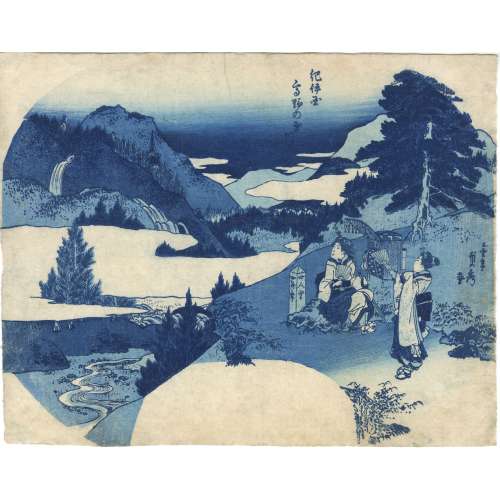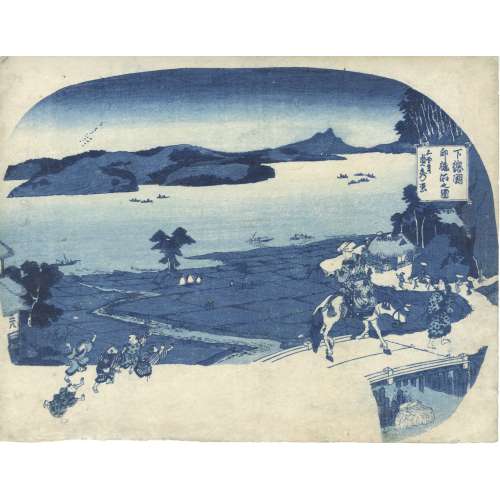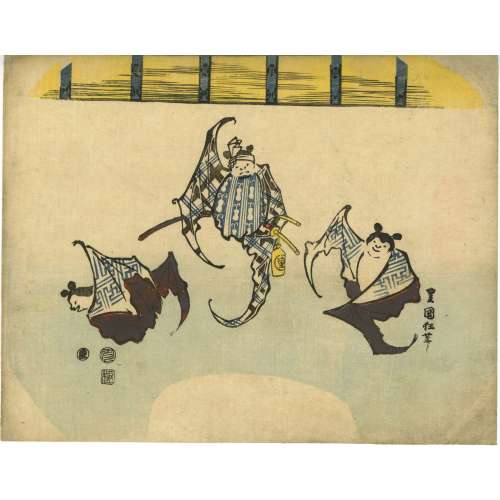Half-length portrait of a woman facing slightly to the right. She wears a patterned kimono with multiple floral and seasonal motifs, including uchiwa (round fans), plum blossoms, maple leaves, chrysanthemums, snow-covered bamboo, pine branches, and peonies. Her obi is tied in front, and a red collar is visible beneath the layers. Her hair is arranged in an elaborate updo and is adorned with a hairpin featuring a rabbit and a crescent moon, referencing lunar symbolism. She dedicates a hand towel at a washing trough (手水舎, temizuya) in a shrine. Inscriptions on the towels.
In the background, several towels are hanging, featuring various mon (family crests) and symbols:
- Three oak leaves
- Crossed or intersecting hawk feathers
- Kiri-mon (Paulownia crest, associated with Kuniyoshi)
- Toshidama (seal of the Utagawa school)
- Masu (枡, measuring box) motif – a square with diagonal lines
- Kuniyoshi Project
- [LIB-3428.2025] Christie’s, New York: Japanese Prints, Paintings, and Screens, Monday, 24 November 1997 / Sales Catalogue, № 130, p. 63.






